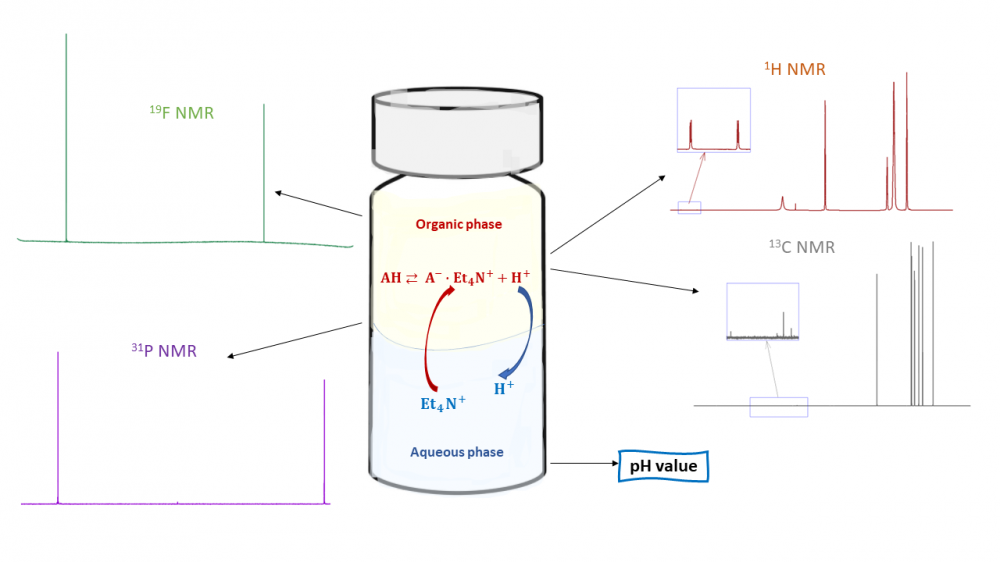JOURNAL 2639
Journal of Chemical Metrology
Year: 2022 Issue: 2 July-December
p.60 - 67
Viewed 2175 times.
GRAPHICAL ABSTRACT

ABSTRACT
NMR is a powerful technique with a wide range of applications, including measurements of acid dissociation constants (pKa values). One such example where NMR is particularly valuable is the measurement of biphasic octanol-water pKa (pKaow) values. Acid-base properties in biphasic systems (extraction systems, lipid bilayers, phase-transfer catalysis systems) are commonly estimated from single-phase (typically aqueous) pKa values. However, acid-base properties in biphasic systems are more complex than in systems consisting of one phase and the single-phase pKa value does not adequately describe the situation. Biphasic pKa values (such as octanol:water biphasic pKa values, pKaow) have been introduced to provide a more realistic description of behaviour acids in biphasic systems. 1H and 13C NMR have been used extensively for pKaow measurements and their advantages and disadvantages have been discussed in detail. However, the suitability of 31P NMR has not yet been assessed in depth and 19F NMR has until now not been used for pKaow measurements at all. In this study, we measure pKaow values with 1H, 13C, 19F and 31P NMR and provide a detailed comparison of NMR with these four nuclei in terms of pKaow measurement.
KEYWORDS- NMR
- acidity
- lipophilicity
- biphasic systems
- partitioning equilibria